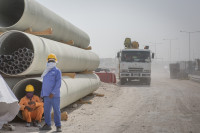Columns
Reimagining South Asia
Let's imagine a South Asian digital currency and other initiatives for the region.
Sujeev Shakya
Last week, I was watching on YouTube a video of the performances at the virtual event organised by the South Asia Symphony Foundation where many South Asian talents got together to perform. This foundation founded by a former Indian foreign secretary Nirupama Rao and her husband has been trying to promote peace through exchange related to music. I kept wondering how many such efforts there are in South Asia, and how many who believe in the concept of South Asia. Nearly three decades ago, Himal Southasian, a publication of the Southasia Trust, brought about a competitive spirit in the region with many wanting to get publications out and put together events and programmes. Even international organisations started to use the word “Southasia” more liberally. Kanak Mani Dixit has to be credited with the work that Himal did in trying to bring together a common agenda rather than squabble about our differences. We have people like C Raja Mohan and Bibek Debroy in India who kept the South Asia agenda alive.
The National University of Singapore hosts the Institute of South Asian Studies, where I have been fortunate to hold a Senior Fellow position, and I try to make Nepal also heard on the South Asian platform along with another Senior Fellow Nishchalnath Pandey. While there are many South Asia-oriented institutions in different academic institutions worldwide, the discussions and publications are just centred around India and Pakistan. The competition in many institutions has been to focus on the strained relations between these two neighbours rather than find common areas to talk about.
Imagine no borders
There are three reasons why it is important to reimagine South Asia.
First, the impact of climate change is real and not an issue that is seen as an activists’ delight. We have seen how polluted air or migratory birds do not see political boundaries. If India is to build the infrastructure it wants to, it is also important to figure out how it will not be at an ecological cost to Bhutan or Nepal. In Nepal, we have seen in the past few decades stones, sands and aggregates cross the border through a not so transparent mechanism that operates under the protection of the highest level of political leadership. We have seen that Bhutan, despite its 70 percent forest cover, still faces challenges of air pollution due to transboundary movement of pollutants.
There are institutions like the International Centre for Integrated Mountain Development (ICIMOD) that have a knowledge repository of research, but it is time to see how we can make this useful for individuals, businesses and institutions. There is lot of common work to be done in the areas of adapting and mitigating the impact of climate change. No country can tackle these issues alone, which means there is no alternative to regional initiatives. The World Bank has embarked on the One South Asia programme, and it is trying to revisit some of the past successes in bringing people who believe in the potential of an integrated region together.
The second reason is that the Covid- 19 pandemic accelerated the pace of digitisation and digitalisation. Internet penetration, e-commerce and digital payments proliferated along with the use of social media. This means there is an opportunity for regional collaboration. In Unleashing Nepal, I have talked about the concept of a common South Asian currency to be named Rupa. Now is the right time to revisit this in the form of a digital currency that can be stored in digital wallets with convertibility protocols determined by the central banks of the respective countries. Imagine, a truck driver travelling from Chittagong port in Bangladesh to Bhutan or Nepal can just rely on the currency he has stored in this digital wallet without having to bother about where to exchange money. Similarly, movement within South Asia can be regulated using digital platforms as every country has created its own digital ID which makes monitoring so much easier.
Expensive Bhutan
Third, it is important to ensure there are more youths who believe in reimagining South Asia. Whenever we discuss South Asia, we hardly find young people in any of the countries really understanding the potential of working jointly. Never before in history has the world been so connected, but never before has it been so difficult to cross boundaries physically either. While Nepali music and films are popular in Bhutan, there is no way a Nepali can travel to Bhutan without paying high fees. Similarly, there are so many collaborative efforts that can be brought to fruition by Indian and Pakistani artists, but it is like close to impossible to make such things happen. We need to ensure that people who host South Asian events provide as much space as possible to every country.
Talk of making South Asia should revolve around people-to-people cooperation between different countries, not the strained relations between India and Pakistan. I have been continuously writing about Border Economic Zones and embracing frontier opportunities. For Nepal, it is in its own interest to push the agenda of South Asia, not leverage the ease of travel to Nepal to convene South Asian platforms and events. There is renewed interest in South Asia, we just need to reimagine and make many of the things we have been talking about for decades happen.




 13.12°C Kathmandu
13.12°C Kathmandu













%20(1).jpg&w=300&height=200)

